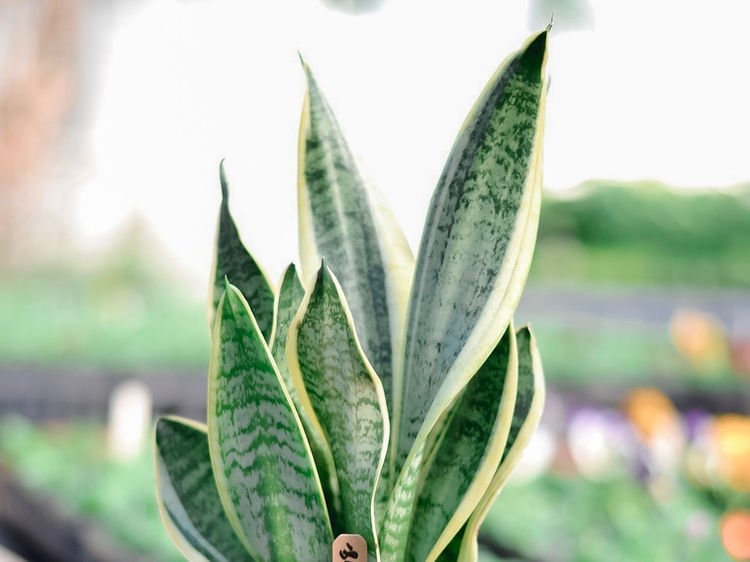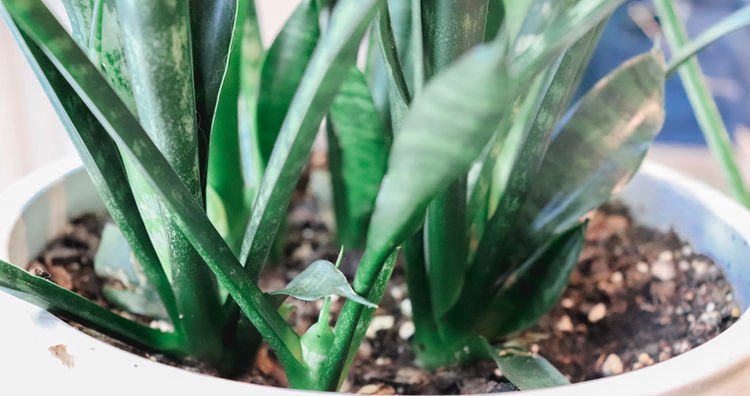Sansevieria AKA Snake Plant Profile & Basic Care Tips
Sansevieria is a staple in any home jungle and one of the easiest house plants to take care of. Discover what makes Snake Plant the perfect plant for those with a "black thumb".
I was introduced to Sansevieria when I was moving into my first apartment. My grandma had rooted some in a beautiful
rustic pot. She gave it to me as a house warming present. Three years later and it’s still growing tall and strong. Snake Plant also do very well with trailing or hanging plants like pothos and philodendron. Mixing the tall leaves of Sansevieria and the dangling vines of philodendron create a beautiful dynamic arrangement. Don't be afraid to play with height levels in your planting!
What Is Sansevieria?
What is Snake Plant you may ask! Sansevieria is one of the easiest plants to take care of and can basically live in any light situation in your home. This plant baby dorms different nicknames like Snake Plant, for its snake scale-like color variations on its leaves and my personal fav Mother-in-Law’s tongue for it’s sturdy and sharp nature of the plant.
There are over 70 species of Sansevieria, but one of the most popular, S.t. ‘Laurentii,’ can be distinguished by its dark green marbling and sword-shaped leaves edged in golden yellow.
Tough and Strong - The Perfect Attributes for a Beginner Plant!
Sansevieria is one of the toughest houseplants in the world making them one of the best plants for beginner planters. Their roots are strong and will break a planter too small. The only thing the snake plant doesn’t like is when you touch its sharp tip. If you break the tip of the Sansevieria, it will stop growing - kinda like when you cut a leaf of Aloe Vera.
Snake Plant can survive in basically any corner of your home. From the brightest window to the darkest corner, Mother-in-Law’s tongue can handle it! Like most "indestructible" plants it can survive in low light but will thrive in bright light. The plant is also really forgiving if you forget to water it. I recommend this baby to any new plant beginners - they will be a fun and trendy starter plant or addition to your home jungle!
Makes New Plant babies On Its Own!
Snake plants come equipped with a rhizome or a rootstock that runs just below the surface of the soil. New plant babies will shoot up from that rhizome. You can either let them grow or detach and pot them up to give away as gifts or keep for yourself!
You can also propagate sansevieria by taking leaf cuttings and rooting in soil or water. This is a slower process, but it still works.
Quick Care Tips
Light: basically any light, but medium to bright light brings faster growth and darker marbling in the leaves.
Temperature: Warm. Average house temperatures - don’t overthink it!
Watering: Water Sparsely. Water well and then not again until the soil is completely dry. If you forget, they forgive!
Fertilizer: Do not overfeed. Once a month during the growth period. Sansevieria does not need to be repotted often: some can go three to five years before being repotted. Simply take some topsoil out and replace it with fresh soil covering the roots.
Don't overthink it! Sansevieria will love you if you forget it!
Happy planting!
Savannah



